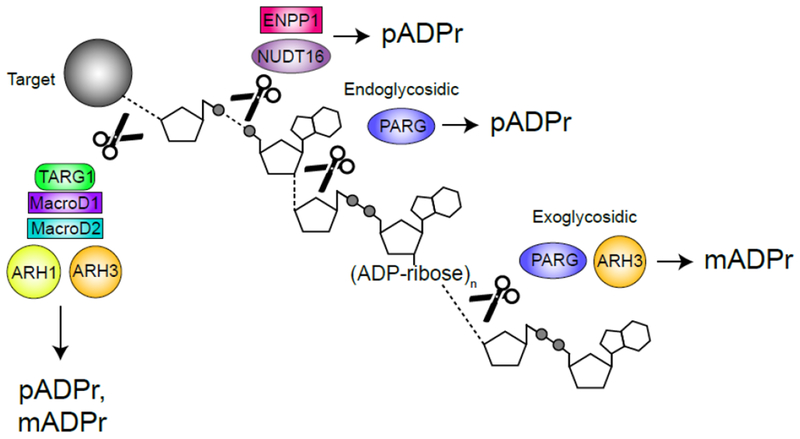Figure 1. Key Figure – DePARylation.

ADP(ribose) (ADPr) hydrolases cleave specific chemical linkages to release poly(ADP)ribose (pADPr) or mono(ADP)ribose (pADPr) from protein and DNA targets. PARG cleaves within the pADPr chain (endoglycosidically) to yield free pADPr and at the end of the chain (exoglycosidically) to produce mADPr (25, 26). ARH3 cleaves exoglycosidically to produce mADPr from the end of pADPr chains and from MARylated serines (28). ENPP1 and NUDT16 cleave phosphodiester bonds to produce protein-conjugated ribose-5’-phosphate and pADPr (37). TARG1, MacroD1 and MacroD2 cleave the terminal ADPr bond to release pADPr or mADPr from glutamate while ARH1 cleaves the terminal bond but only for targets MARylated on arginine (2, 30). ADP-ribosen represents chains of n = 2-100.
